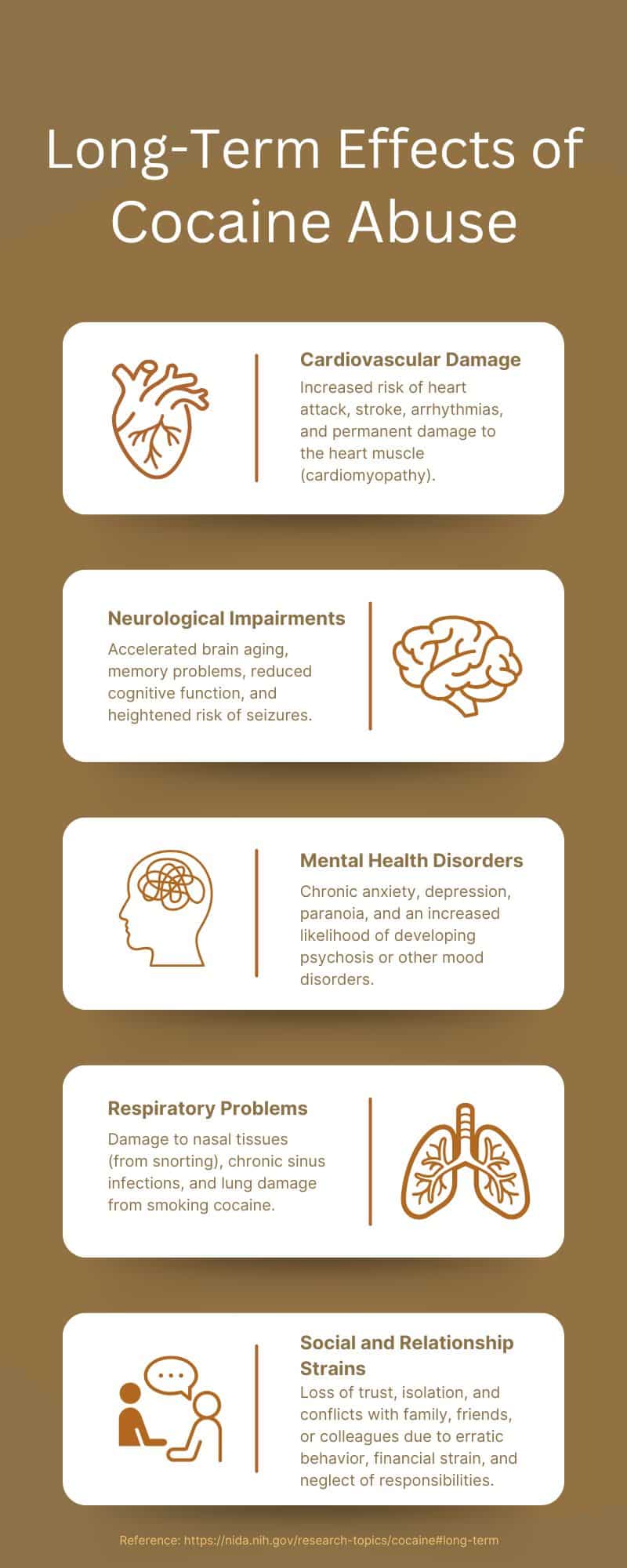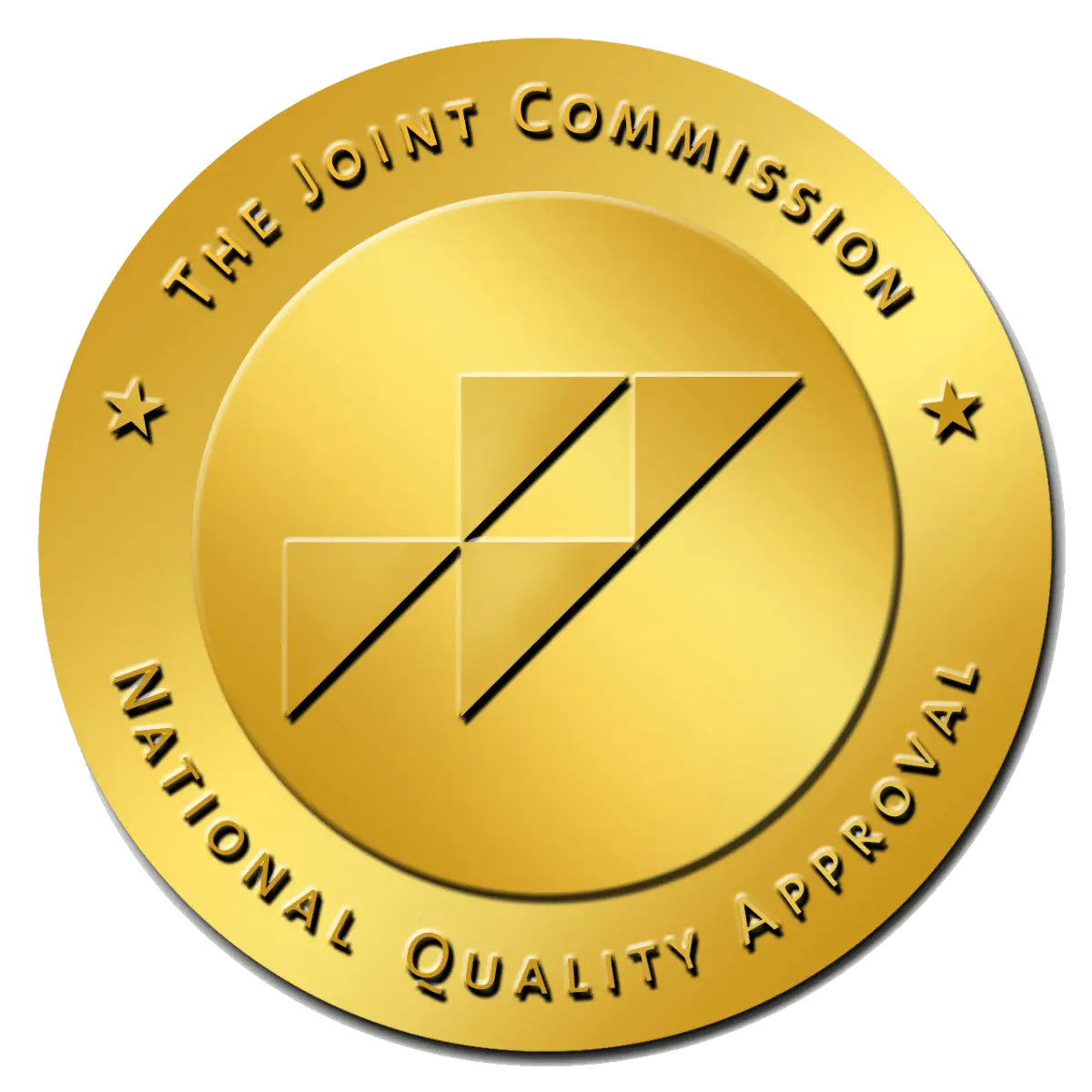What is Cocaine Nose?
Written by: Michelle Beaupre, PhD, LCSW | Reviewed by: Christian Small, MD
At Villa Oasis, we specialize in the comprehensive care of individuals dealing with substance abuse, with a focus on overcoming the effects of cocaine use. Our dedicated professionals provide a nurturing environment for healing and recovery. Cocaine nose, also called cocaine-induced septal perforation, is a severe condition caused by chronic snorting of cocaine. It leads to tissue damage, frequent nosebleeds, infections, and in severe cases, nasal collapse.
Cocaine nose, or septal perforation, occurs when chronic snorting of cocaine leads to damage in the nasal cavity, causing symptoms like persistent nosebleeds, infections, and potentially, a collapse of the nasal structure. Highlighting the urgency of addressing this issue, e National Survey on Drug Use and Health (NSDUH) indicates that in 2015, 968,000 people aged 12 or older initiated cocaine use. This statistic underscores the widespread challenge of cocaine use and the importance of targeted treatment and recovery services offered at facilities like Villa Oasis.
At Villa Oasis, we address both the addiction and its physical manifestations through a holistic approach that includes medical treatment, psychological support, and lifestyle adjustments. Our goal is to not only treat cocaine nose but also to empower individuals to achieve long-term recovery and improved quality of life.

What Is Cocaine Nose?
Cocaine nose, also known as septal perforation from cocaine use, develops from prolonged snorting of cocaine, a powerful stimulant that severely damages nasal tissues. Cocaine constricts blood vessels, reducing blood flow to the nasal septum—the cartilage that separates the nostrils. Without adequate circulation, the tissue begins to deteriorate, leading to inflammation, infection, and eventual perforation.
Early signs include frequent nosebleeds, nasal congestion, and persistent dryness or irritation. As the damage progresses, tissue death, chronic inflammation, and infections can develop, ultimately resulting in a hole in the septum. This perforation can significantly impact nasal function, altering breathing, speech, and appearance.
The risks of cocaine use extend beyond nasal damage. In 2011, 162.1 out of every 100,000 emergency department visits involved cocaine, highlighting its widespread health consequences. Long-term use may also lead to rebound congestion (rhinitis medicamentosa), chronic sinus infections, and, in severe cases, saddle nose deformity, where the nasal bridge collapses. Additionally, cocaine use can affect other areas of the body, including vision, contributing to conditions like cocaine eyes, which can cause redness, dilated pupils, and long-term eye damage.
Recognizing the dangers of cocaine nose early is essential. At Villa Oasis, we take a holistic approach to recovery, addressing both addiction and its physical effects to help individuals regain their health and well-being.
Symptoms and Signs of Cocaine Nose
Cocaine nose, a condition caused by the prolonged snorting of cocaine, results in progressive damage to the nasal passages. This damage impacts both function and structure, leading to noticeable symptoms that worsen over time. Early detection is key to preventing permanent disfigurement and breathing difficulties. Below is a breakdown of the most common signs of cocaine nose:
- Frequent Nosebleeds – Snorting cocaine weakens and ruptures blood vessels, making nosebleeds one of the earliest warning signs.
- Persistent Runny Nose (Rhinorrhea) – Chronic irritation inflames nasal tissues, triggering continuous nasal discharge, even when not using cocaine.
- Nasal Congestion – Swelling from repeated cocaine exposure can block airflow, leading to persistent stuffiness and discomfort.
- Difficulty Breathing Through the Nose – Over time, cocaine-induced tissue damage can obstruct airflow, making nasal breathing increasingly difficult.
- Whistling Sound When Breathing – A septal perforation (hole in the nasal septum), a hallmark of cocaine nose, can produce a whistling noise while breathing.
- Nasal Pain or Discomfort – The harsh chemicals in cocaine, combined with ongoing tissue damage, often cause chronic pain or a burning sensation in the nasal cavity.
Advanced Effects: Saddle Nose Deformity
In severe cases, cocaine use can cause the nasal bridge to collapse, leading to a condition called saddle nose deformity. This occurs when the septum deteriorates, leaving the nose unsupported. The result is a visible indentation in the nose’s structure, which not only impacts appearance but can also:
- Impair breathing
- Alter speech
- Cause chronic sinus infections
The Hidden Dangers of Cocaine Use
Beyond nasal damage, cocaine is increasingly being mixed with fentanyl, a powerful synthetic opioid, which raises the risk of overdose and severe health complications. Recognizing the early signs of cocaine nose is crucial to preventing long-term damage.
Seeking Treatment Before Permanent Damage Occurs
Cocaine nose isn’t just a cosmetic issue—it’s a serious medical condition that can impact overall respiratory health. If you or someone you know is experiencing these symptoms, seeking professional treatment is essential. Depending on severity, treatment may involve:
- Medical interventions to manage nasal damage
- Surgical repair for advanced cases of septal perforation
- Comprehensive addiction recovery programs to treat the underlying cocaine abuse
At Villa Oasis, we provide a holistic, evidence-based approach to healing, addressing both the physical effects of cocaine nose and the root causes of addiction. Contact us today to learn more about how we can help you recover and regain your health.
How Cocaine Nose Affects Your Health
Beyond the physical discomfort and cosmetic concerns, cocaine nose can lead to serious health complications. Damage to the nasal lining weakens the body’s natural defenses, making individuals more susceptible to infections. Chronic inflammation can spread to the sinuses, leading to recurring sinus infections and long-term respiratory issues.
Breathing and Respiratory Complications
As the nasal passages deteriorate, they lose their ability to filter and regulate airflow, increasing the risk of respiratory infections and lung damage. Over time, the constant irritation and exposure to harmful substances can result in chronic breathing difficulties, further affecting overall health and quality of life.
Loss of Smell and Sensory Impairments
Cocaine use can also damage the nerves responsible for smell and taste, leading to a diminished sense of smell (anosmia) or complete olfactory loss. This can significantly impact daily life, making it difficult to detect gas leaks, spoiled food, or other environmental hazards.
Why Early Treatment is Crucial
The long-term effects of cocaine nose can be permanent if left untreated. Seeking professional treatment early can prevent irreversible damage and improve nasal and overall health. At Villa Oasis, we provide comprehensive addiction treatment that supports both physical healing and long-term recovery.
How Different Types of Cocaine Contribute to Cocaine Nose
Cocaine comes in various forms, each with its unique risks and effects on the user. While the traditional powdered form of cocaine is widely recognized, other variants like “crack” cocaine and “pink cocaine” are also prevalent. Pink cocaine, a designer drug that can vary in composition, is often mistakenly perceived as less harmful due to its name and appearance. However, like its powdered counterpart, pink cocaine poses significant risks to the user’s health, including the development of conditions such as cocaine nose. The variation in cocaine forms underscores the importance of awareness and education on the substance’s potential dangers, regardless of its appearance or mode of use.
By understanding the risks associated with all forms of cocaine, individuals can make informed decisions about their health and well-being. At Villa Oasis, our treatment programs are designed to address the challenges of addiction to various substances, including the unique risks posed by different forms of cocaine. Our comprehensive approach ensures that individuals grappling with substance abuse receive the support and care needed to overcome addiction and its effects, such as cocaine nose.

Treatment and Recovery at Villa Oasis
At Villa Oasis, we offer a holistic approach to treating cocaine nose, starting with addressing the root cause: cocaine addiction. Our residential treatment program provides a safe and supportive environment for detoxification and recovery, focusing on both physical and psychological healing.
Detoxification Process
Detox is the first step towards recovery, where we provide medical supervision to safely manage withdrawal symptoms. Our team of healthcare professionals ensures that residents receive the necessary support and care to navigate this challenging phase. For those curious about how long cocaine lasts in your system, our experts offer valuable insights to help individuals understand their journey and prepare for the next stages of recovery.
Comprehensive Care
Following detox, residents participate in our residential treatment program, which includes:
- Individual therapy sessions to address the psychological aspects of addiction
- Group therapy sessions to foster a sense of community and shared experiences
- Educational workshops to understand the effects of cocaine on the body and how to manage cravings
- Holistic therapies, such as meditation and yoga, to promote overall well-being
Addressing Cocaine Nose
For individuals suffering from cocaine nose, we collaborate with medical specialists to assess the extent of the damage and explore treatment options. In some cases, surgical intervention may be necessary to repair the nasal septum. However, our primary focus remains on recovery from addiction, as halting cocaine use is crucial to prevent further damage.
Long-Term Recovery and Support for Cocaine Addiction
Recovery from cocaine addiction and its physical effects is a long-term journey. Villa Oasis is committed to supporting our residents, even after they leave our facility. We offer aftercare programs, including therapy and support groups, to help individuals maintain their sobriety and navigate the challenges of recovery.
Cocaine nose is a painful and dangerous condition, but it’s also a treatable one. At Villa Oasis, we understand the complexities of substance abuse and are dedicated to providing comprehensive care that addresses both the physical and psychological effects of cocaine addiction. Our team is committed to supporting each individual through their recovery journey, offering hope and healing for a healthier, substance-free future.
If you or a loved one is struggling with cocaine addiction and its effects, including cocaine nose, we invite you to reach out to us at Villa Oasis. Together, we can embark on the path to recovery and rediscover a life free from substance abuse.





